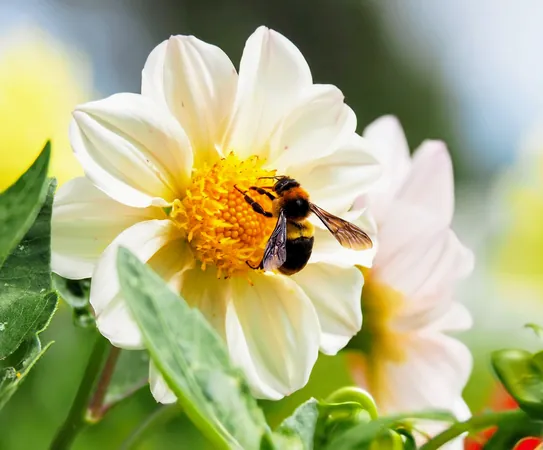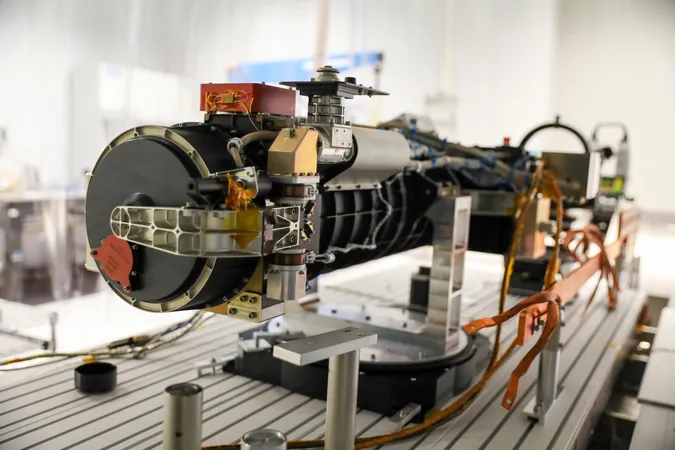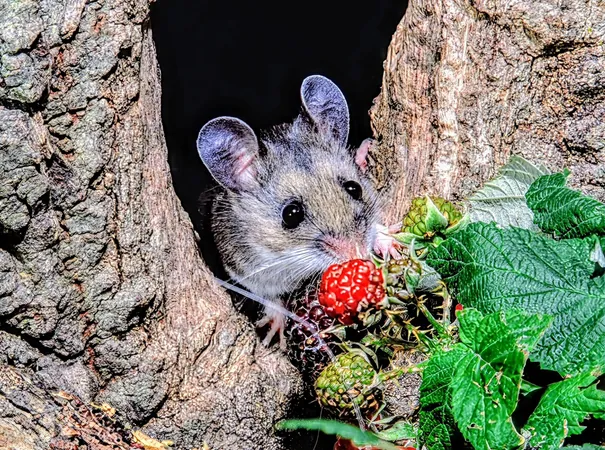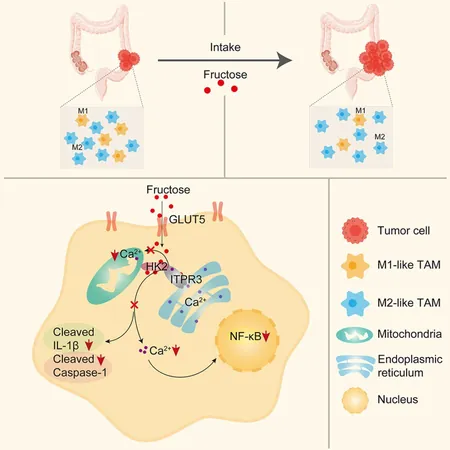
The Sweet Science: How Flowers Use Caffeine to Entice Bees
2024-11-10
Author: Wei
The Sweet Science: How Flowers Use Caffeine to Entice Bees
When it comes to intelligence in the animal kingdom, bumblebees might not be the first creatures we think about. However, these small, buzzing wonders have proven to be remarkably skilled learners, revealing a surprising level of cognitive ability.
Professor Felicity Muth, an assistant professor within the Department of Neurobiology, Physiology, and Behavior at UC Davis, has dedicated her research to unraveling the mental capacities of bumblebees. Despite their brain size being smaller than a sesame seed, research led by Professor Muth indicates that these insects can outperform many vertebrates in various cognitive tasks.
Bumblebees: Nature's Underrated Geniuses
Initially intrigued by avian behavior, Professor Muth shifted her focus to bumblebees to explore how these insects learn, select flowers, and what drives their foraging behavior. One fascinating aspect of this relationship is how plants and flowers have evolved strategies to attract bee visitors.
Flowering plants reward bees with sweet nectar rich in sugar, ensuring that bees will return to them for pollination. However, some plants have taken a step further by infusing their nectar with caffeine and other chemicals, such as octopamine and tyramine—substances that act as hormones and neurotransmitters, enhancing the bees' learning and memory.
Caffeine: The Secret Nectar Ingredient
The intriguing findings from Muth's studies highlight a peculiar side effect of caffeine-laced nectar: bees perceive it to be sweeter than it is, increasing their likelihood of remembering and revisiting those flowers. In turn, this boosts the frequency with which they visit these floral sources. Yet, interestingly, the presence of octopamine and tyramine can neutralize caffeine's stimulating effects, presenting a complex chemical game between plants and bees.
A Summer of Discovery in the Sierra Nevada
Professor Muth, alongside her students, spends summer months capturing wild-foraging bumblebees across California’s Sierra Nevada. By conducting tests with color-coded tabs soaked in sugar water, they assess the bees’ ability to connect specific colors with food rewards.
A pivotal 2021 study conducted by Muth and her then-postdoc, Anne Leonard, unveiled that while female worker bees and male drones exhibited comparable learning abilities, the males lagged slightly in decision-making speed. The real standout, however, emerged from observations of queen bumblebees, who demonstrated quicker learning capabilities than their worker counterparts.
The Cognitive Evolution of Queen Bees
Professor Muth was drawn to study queen bees due to their elusive nature and the limited time they have for foraging, which heightens the stakes for efficient resource gathering. This scarcity likely spurs cognitive specialization, suggesting that the inclusion of caffeine in nectar could further enhance their learning and memory, essential for accomplishing their varied tasks—finding mates and nesting sites.
Diving Deeper: The Neural Mechanisms of Learning
Going beyond behavior, Muth’s work delves into the neural foundations of learning and memory in bumblebees. By employing advanced imaging techniques, her team investigates the neural pathways responsible for processing sensory information and forming associative memories.
Through controlled experiments, researchers aim to decode the cognitive strategies that allow bumblebees to adapt to their environments and make survival-enhancing choices. Insights gained not only deepen our understanding of caffeine’s influence on bee cognition but also contribute to broader discussions about the intricate neural architectures that link various animal species.
Implications for Conservation
Understanding bumblebee cognition has vital implications for biodiversity and conservation. Given their crucial role in pollinating many of the world’s crops and wild plants, insights into their behavior and learning patterns can inform sustainable conservation strategies. Professor Muth advocates for protecting natural habitats and cutting back on pesticide use to ensure healthy bee populations.
By bridging cognitive science with environmental stewardship, her research underlines the vital importance of these “brainy” insects in maintaining ecosystem balance and agricultural productivity.
The Quest for Understanding Animal Intelligence
Ultimately, Muth's research aims to reveal how the unique challenges posed to different species shape their cognitive characteristics. Such knowledge may not only shed light on the evolutionary pathways of intelligence across the animal kingdom, including donkeys, birds, and even humans, but also help us understand our own cognitive processes more profoundly.
As we journey from the intricate floral landscapes to the buzzing activity of bumblebees, this exploration rekindles our appreciation for these small yet mighty creatures and their essential role in our ecosystems. The next time you see a bumblebee, consider the intelligent dynamics at play as they flit from flower to flower, possibly under the influence of a cup of nature’s finest caffeine.




 Brasil (PT)
Brasil (PT)
 Canada (EN)
Canada (EN)
 Chile (ES)
Chile (ES)
 España (ES)
España (ES)
 France (FR)
France (FR)
 Hong Kong (EN)
Hong Kong (EN)
 Italia (IT)
Italia (IT)
 日本 (JA)
日本 (JA)
 Magyarország (HU)
Magyarország (HU)
 Norge (NO)
Norge (NO)
 Polska (PL)
Polska (PL)
 Schweiz (DE)
Schweiz (DE)
 Singapore (EN)
Singapore (EN)
 Sverige (SV)
Sverige (SV)
 Suomi (FI)
Suomi (FI)
 Türkiye (TR)
Türkiye (TR)